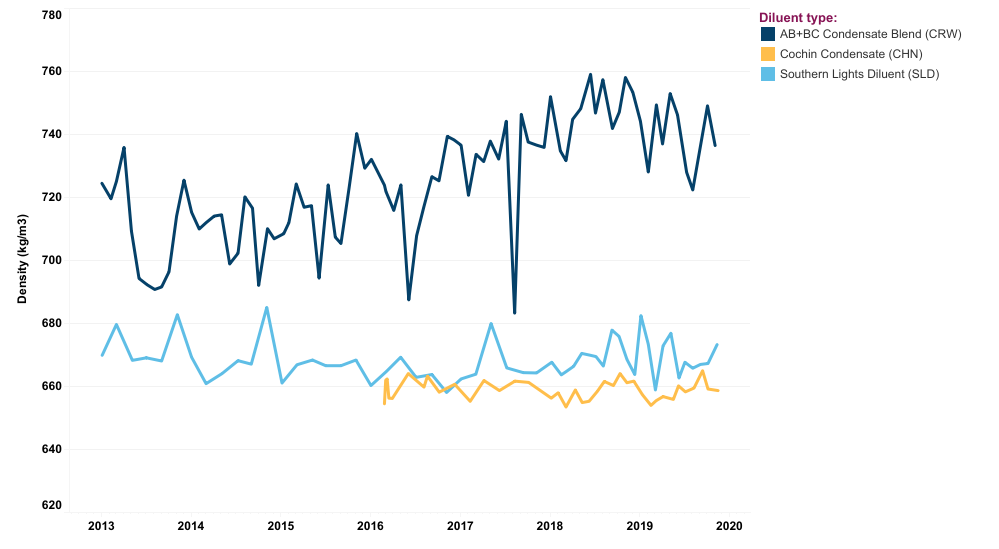
This article was published by the Canada Energy Regulator on March 4, 2020.
Hydrocarbons, like bitumen and other heavy oils, are typically too dense to flow on major export pipelines. For example, bitumen produced in the oil sands has a density of about 1 000 kg/m3, while the maximum density of crude oil allowed on pipelines such as Trans Mountain, Keystone, and the Enbridge Mainline is 940 kg/m3.
Bitumen and other heavy oils are often diluted with lighter hydrocarbons to create “diluted bitumen” with lower density.
Common “diluents” include condensate and pentanes plus(1) produced in Alberta or British Columbia (B.C.), condensate imported from the United States (U.S.) (via the Cochin or Southern Lights pipelines, or by rail), synthetic crude oil, and to a lesser extent, liquefied petroleum gases like butanes.
This “pool” of diluent is changing. Combined production of Alberta and B.C. condensate and pentanes plus is growing faster than condensate imports from the U.S. Because pooled Alberta and B.C. condensate and pentanes plus are denser than imported condensate, the overall pool of diluent is growing denser.

Description: The line time series chart shows the density of 3 types of diluent over a time. AB+BC Condensate Blend (CRW) increases in density over time, while Cochin Condensate (CHN) and Southern Lights Diluent (SLD) remain relatively unchanged. At the start of 2013, the density of CRW was 725 kg/m3, and 737 kg/m3 in November 2019. At the start of 2013, the density of SLD was 670 kg/m3, and 673 kg/m3 in November 2019. At the start of 2016, the density of CHN was 655 kg/m3, and 659 kg/m3 in November 2019. To see a fully animated version of this graph, click here.
As the overall pool of diluent changes, oil sands producers must adjust how they use it. The average density of western Canadian condensate (CRW) has increased slightly over time, reaching an average of 748 kg/m3 in 2018, while the density of Southern Lights Diluent (SLD) has remained relatively consistent, and averaged 659 kg/m3 in 2018.
This difference in density was smaller several years ago in 2013.(2) As increasing production of western Canadian condensate and pentanes plus displaces imports, more diluent may be needed per barrel of bitumen in the future.


Be the first to comment